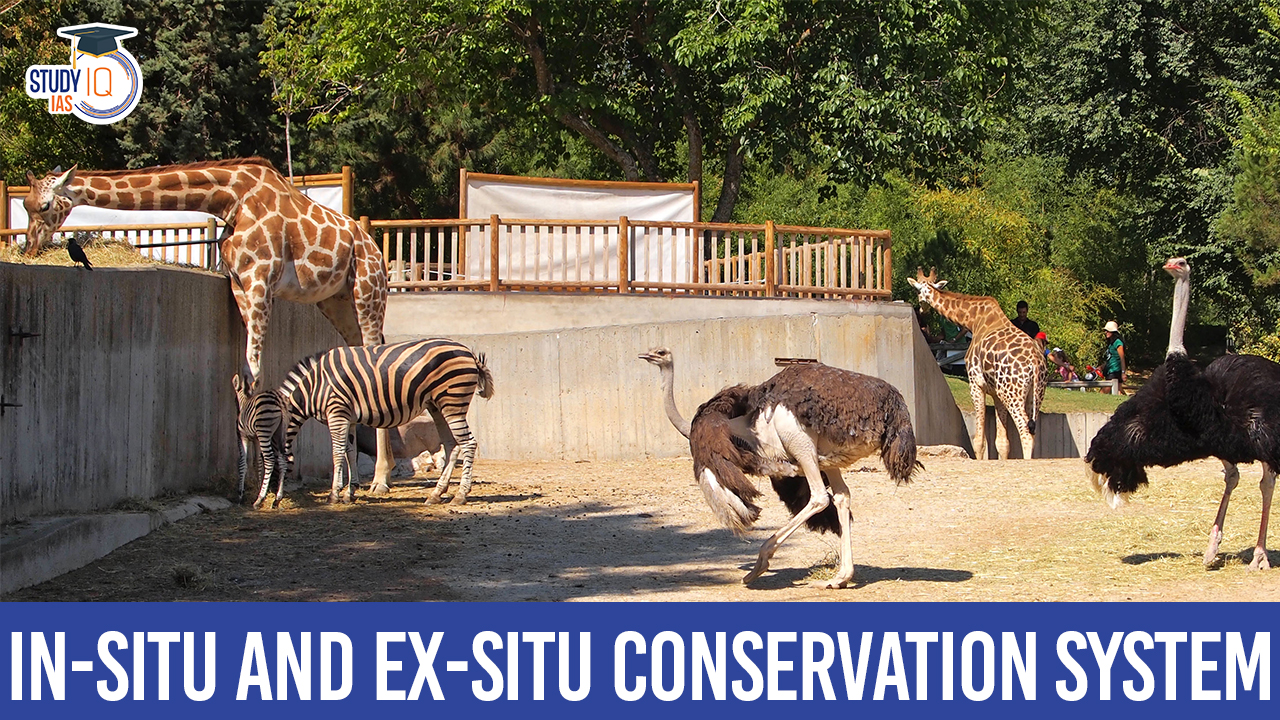Table of Contents
In-Situ and Ex-Situ Conservation System
Conservation of biodiversity is crucial for maintaining the ecological balance and ensuring the sustainable existence of life on Earth. In this endeavor, two primary approaches have emerged: in-situ and ex-situ conservation. While both aim to safeguard species and ecosystems, they employ different methodologies and strategies to achieve their objectives.
In-Situ Conservation
In-situ conservation refers to the preservation of species and ecosystems in their natural habitats. It focuses on protecting and managing entire ecosystems, including the diverse flora and fauna within them. This approach recognizes the intrinsic value of biodiversity and emphasizes the importance of maintaining the intricate relationships between organisms and their environment.
Strategies employed in in-situ conservation include the establishment and management of protected areas such as national parks, wildlife sanctuaries, and marine reserves. These areas serve as havens for a wide range of species, providing them with adequate habitat and protection from human activities such as habitat destruction, poaching, and pollution. Additionally, in-situ conservation efforts often involve community-based conservation initiatives, where local communities are actively engaged in the management and protection of natural resources, promoting sustainable practices that benefit both people and the environment.
One of the key advantages of in-situ conservation is its ability to preserve the natural evolutionary processes that shape ecosystems over time. By allowing species to interact and adapt within their natural environment, in-situ conservation helps maintain genetic diversity and enables species to evolve in response to changing environmental conditions.
We’re now on WhatsApp. Click to Join
Ex-Situ Conservation
Ex-situ conservation, on the other hand, involves the conservation of species outside their natural habitats. This approach is typically employed when species face imminent threats such as habitat destruction, overexploitation, or disease outbreaks that cannot be adequately addressed through in-situ conservation alone.
Ex-situ conservation methods include captive breeding programs, botanical gardens, seed banks, and gene banks. These facilities serve as repositories for endangered species or genetic material, providing a safety net against extinction. Captive breeding programs, for example, involve breeding endangered species in controlled environments with the aim of reintroducing them into the wild once their natural habitats are restored or threats are mitigated.
While ex-situ conservation plays a vital role in preventing the extinction of species, it also presents certain challenges. Maintaining genetic diversity and preventing inbreeding depression are significant concerns in captive breeding programs. Moreover, reintroducing captive-bred individuals into the wild can be challenging, as they may lack the necessary skills to survive in their natural habitat.
Integration of In-Situ and Ex-Situ Conservation: In recent years, there has been a growing recognition of the complementary nature of in-situ and ex-situ conservation approaches. Integrated conservation strategies that combine elements of both approaches have proven to be more effective in safeguarding biodiversity.
For example, ex-situ conservation efforts can support in-situ conservation by providing individuals for reintroduction programs, genetic material for breeding programs, and scientific research to inform management decisions. Conversely, in-situ conservation provides the ultimate goal for ex-situ efforts by ensuring the long-term survival of species within their natural ecosystems.
Differentiate Between In-Situ and Ex-Situ Conservation
| Aspect | In-Situ Conservation | Ex-Situ Conservation |
| Definition | Preservation of species and ecosystems in their natural habitats. | Conservation of species outside their natural habitats. |
| Focus | Protecting and managing entire ecosystems. | Safeguarding individual species or genetic material. |
| Location | Natural habitats such as forests, wetlands, and oceans. | Controlled environments such as zoos, botanical gardens, seed banks, and gene banks. |
| Methods | Establishment of protected areas, community-based conservation initiatives. | Captive breeding programs, botanical gardens, seed banks, gene banks. |
| Objective | Maintain ecological balance, preserve genetic diversity, and protect natural evolutionary processes. | Prevent extinction, preserve genetic diversity, support species recovery efforts. |
| Challenges | Human-wildlife conflict, habitat fragmentation, climate change. | Maintaining genetic diversity, preventing inbreeding depression, successful reintroduction into the wild. |
| Benefits | Protects entire ecosystems, allows for natural evolutionary processes. | Provides a safety net against extinction, supports species recovery efforts, facilitates scientific research. |
| Integration Potential | Can complement ex-situ conservation efforts by providing natural habitats for reintroduction programs. | Can support in-situ conservation by providing individuals for reintroduction programs, genetic material for breeding programs, and scientific research. |
| Examples | National parks, wildlife sanctuaries, marine reserves. | Zoos, botanical gardens, seed banks, gene banks. |
Conclusion
In-situ and ex-situ conservation are two distinct approaches to preserving biodiversity, each with its strengths and limitations. While in-situ conservation focuses on protecting species within their natural habitats, ex-situ conservation provides a safety net against extinction by conserving species outside their natural environments. By integrating these approaches and implementing holistic conservation strategies, we can maximize our efforts to safeguard biodiversity for future generations. Ultimately, the preservation of Earth’s rich tapestry of life requires a concerted effort from governments, conservation organizations, local communities, and individuals worldwide.


 Aravallis Degradation and Restoration: I...
Aravallis Degradation and Restoration: I...





















